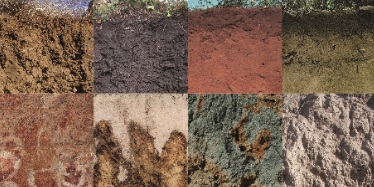Soil colour

The colour of the soil is usually the first thing people notice.
Mostly this is just the topsoil but it does not reflect the entire soil. The topsoil is usually darker than lower layers (or horizons) because this is where organic matter accumulates.
Soil colour is usually due to 3 main pigments:
- black—from organic matter
- red—from iron and aluminium oxides
- white—from silicates and salt.
Colour can be a useful indicator of some of the general properties of a soil, as well as some of the chemical processes that are occurring beneath the surface.
Soil colour | Soil types and characteristics | Typical management implications |
|---|---|---|
Black | These soils are often associated with high levels of organic matter (peats). |
|
Black | Vertosols (cracking clay soils) |
|
White/pale/bleached | These soils are often referred to as bleached or 'washed out'. The iron and manganese particles have been leached out due to high amounts of rainfall or drainage. |
|
Red | This colour indicates good drainage. Iron found within the soil is oxidised more readily due to the higher oxygen content. This causes the soil to develop a 'rusty' colour. The colour can be darker due to organic matter. |
|
Yellow to yellow-brown | These soils often have poorer drainage than red soils. The iron compounds in these soils are in a hydrated form and therefore do not produce the 'rusty' colour. |
|
Brown | Soils associated with moderate organic matter level and iron oxides. |
|
Gleyed/grey/green | These soils are associated with very poor drainage or waterlogging. The lack of air in these soils provides conditions for iron and manganese to form compounds that give these soils their colour. |
|
Source: Adapted from Soil Constraints and Management Package


